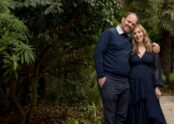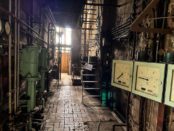[dropcap style=”font-size:100px; color:#992211;”]W[/dropcap]e are guilty. All of us. Trebuchet particularly.
Investing too much emotion, expectation, verbosity, vocabulary onto art. Projecting onto objects a grandiose suite of interpretations, embodiments, portents.
We’re doing it now.
Dr Chris Barlow, organiser of the Parallax Art Fair, attacks the pretense. And in doing so, deftly whets the appetite for a journey to Chelsea Town Hall in late February. Refreshing stuff.
What first drew you to art?
The stories of art historians.
How did Parallax start?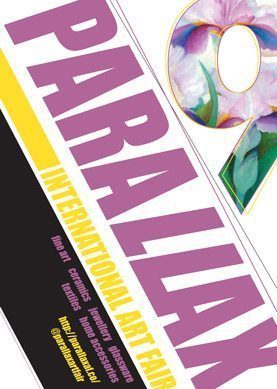
A possible history: it started with a question about contemporary art practice and Art History twenty years ago and it never went away. I organised a research exhibition called “Parallax” in 2010 where Idem Sonans and En Avant were first exhibited: these emphasised the historical narratives and anthropomorphisms that impede the viewer.
They are an antidote to an epistemological disease that we have inherited from the nineteenth century. I was grateful that the historian, Alun Munslow, and the art historians, Donald Preziosi and Paul Gladston contributed to the catalogue.
I challenge “forward-looking” dealers to step out and deal in En Avant as “contextualised” art production. Parallax AF grew out of this exhibition after talking with artists.
[quote]If one can formulate
a “vision” then how does
one recognise aspects of
this “vision” in art objects…?[/quote]
What is the vision for this Parallax?
It is about the viewer.
Which artists typify the vision you have for the fair?
This is an interesting question because it highlights one of the issues raised about the industry by Parallax. If one can formulate a “vision” then how does one recognise aspects of this “vision” in art objects (or vice versa) in order to have said that one has drawn a correlation between them?
It seems to be an inflection of art-historical language. But the industry goes on subdividing and hierarchising, believing a mere declaration to be an existential fact about the objects. The industry is quite ill.
What do you dislike most about art?
Its rampant shamanism and fetishism. Curators, artists, historians and critics do not really “see” anything more or less “in” or “on” an art object than the average person on the street. [quote]It is naive to go
on believing that a
metaphor is a literal fact[/quote]
Art objects do not have “magical healing” properties either. They cannot make people feel better or worse; informed or misinformed. That is wishful thinking. They do not have personality, they cannot speak or hear you, and there is no “presence” of their makers. The latter is perhaps the greatest error thrust upon the wealthy who invest in these objects. They remind me pitifully of Frederick the Wise who hoarded all his priceless relics.
It is a type of superstition we have today; a longing for the immaterial in a post-secular world.
How would you define artistic controversy?
A made-up story based on nineteenth-century assumptions about objects and Hegel. It categorises objects on a particular trajectory of progress, often confusing aesthetics with technology along the way. It relies on a belief that art objects can “embody” something of their environment.
But objects do not “embody” anything in that way. That was a categorical error of previous historians, which we have inherited. It is naive to go on believing that a metaphor is a literal fact. And unethical to pretend to the Public if you know better.
Do you think that controversy is a positive force in art or a conceptual red herring?
Not understanding, or refusing to confront, the idea that controversy is possibly a mere art-historical narrative is a far greater negative force on art education, art production and the cultural industry as a whole. It accounts for the real abuse in the art industry, which is intellectual, and the real “disenfranchisement” amongst artists, which is historico-aesthetical.
I have written on this extensively in the recent catalogue essay, Proem 4319.
What’s been your biggest success?
I think there is becoming a gradual interest in the ideas behind Parallax. If discussion is generated then that is a good thing. The arts and the arts industry are long-overdue for a conceptual overhaul. We need to recognise the power that Art History has on our art production, museum displays, and historical production.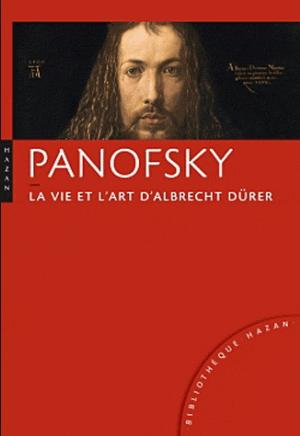
What’s been your biggest challenge?
Probably getting those who generate discussions to realise that their very discussions are one of the purposes and components of Parallax and its historical narration. History is art and we are all artists at it.
Who are your five favourite artists and which pieces of theirs do you admire?
Perhaps, and in no order, Leopold Ranke, Jakob Burchkardt, Heinrich Wölfflin, Arnold Hauser and Erwin Panofsky. They are great artists with many influential art works to their name.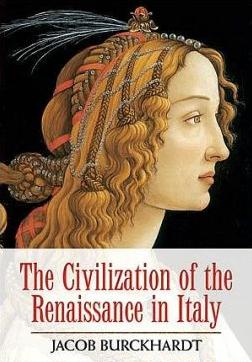
Who do you think is the artist to watch at the moment and why?
Art Review’s Top 100 editor. Historically speaking, they hold power.
What does the future hold?
It depends on how one constructs the past. But I do think artists (and perhaps young critics coming through) should start to look at how and why a mere declaration that an inert object “embodies” the “presence” of an artist or their environment becomes a type of existential fact for so many people. And is believed, sometimes contrary to what is thought, making hierarchisation of objects and artists possible.
Perhaps a more ethical way of judging art and artists, and avoiding the anthropomorphic superstition, is to appreciate the metaphor, mistaken or otherwise, between the object and what the maker believes about that object.
Parallax Art Fair will be at Chelsea Town Hall, London. 21st, 22nd February 2014
[button link=”http://www.barlowfinedrawings.com/index.html” newwindow=”yes”] Parallax Art Fair[/button]

The aim of art is to represent not the outward appearance of things, but their inward significance. – Aristotle







